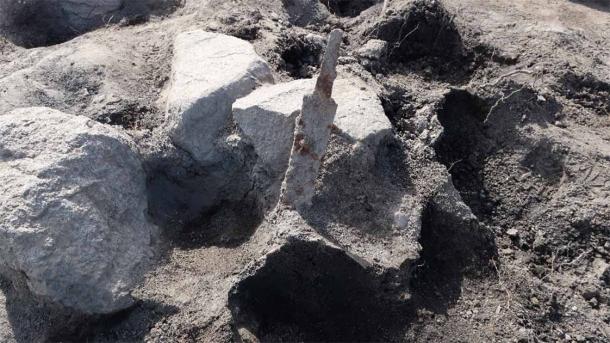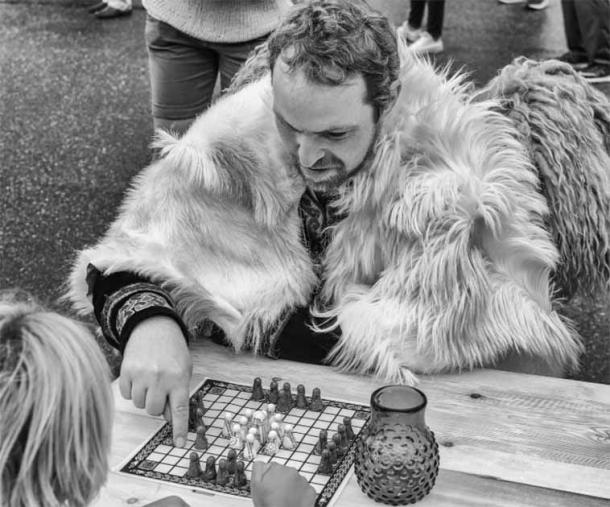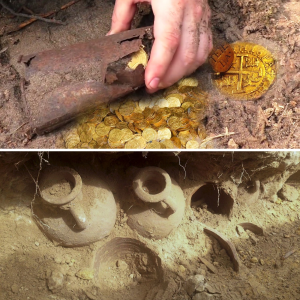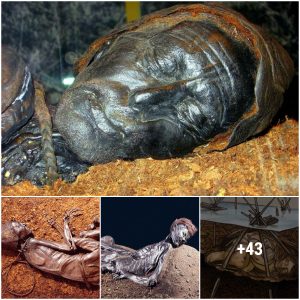Archaeologists in Sweden have discovered a Viking Age burial with bear claws and two swords that look to have served as grave markers.
The two Viking Age swords were found by archaeologists excavating a set of three stone chambers within a burial mound in Viby/Norrtuna outside Köping, in Västmanland, Sweden. This was an important Swedish Viking Age port and market town, so it was perhaps no surprise that the team of investigators discovered artifacts belonging to an elite Viking merchant or trader.
A comb, a gaming piece, and a large cache of glass beads were all discovered inside one mound. In another, the archaeologists found a pair of Viking Age swords, buried shallow and standing upright.
When History Peeks Through the Dirt
Archaeologists working at the Västmanland mound have found evidence of both Bronze Age and earlier Iron Age farming . The Västmanland burial site has so far yielded around 100 early Viking Age graves, and two burial mounds. The recent discovery and excavation of three stone tombs built into one of the mounds was conducted by Arkeologerna. In their recent report, Professor Anton Seiler, an archaeologist at the State Historical Museums, said the team “could see the handle of one of the swords sticking out of the ground, directly under the turf.”
- What’s a Viking Sword? What’s not? The Distinctions of Norse Weaponry
- 1,000-year-old Viking Sword in Extraordinary Condition Discovered in Ireland

One of the two gravesites had two Viking Age swords left upright, ostensibly as grave markers ( Arkeologerna Statens historiska museer/E18 Viby CC BY)
Around twenty Viking Age swords have so far been excavated in the Västmanland region. However, the researchers said that this is the “first time” two swords have been found in the same burial ground, and left untouched. It is believed that the two swords were forged in the Late Iron Age, around 600 – 1000 AD. Seiler suggests that the swords could have been placed on the mound “to honor and remember one’s relatives, being a physical marker that family members could visit and touch 1,200 years ago”.
Keeping Ancient Traditions Alive
The earliest grave markers in Europe were huge megaliths dating back to Celtic and Roman cultures around 3,000 BC, which often defined enormous family burial chambers, or cairns. These ancient burials often contain the charcoal remains of burnt offerings to the old gods, including human bones. Excavations in the Västmanland mound also revealed the cremated remains of humans and animal bones, representing a continuation of Neolithic traditions .
The team of researchers are yet unclear as to why several individuals were buried in the mound centuries after it was abandoned; however, the results of osteological analysis will soon provide an answer. Besides these later bodies, the archaeologists discovered three fascinating artifacts: a piece of comb, a gaming piece and bear claws.
In 2020, I wrote an Ancient Origins news piece about the discovery of a tiny glass crown on the Holy Island of Lindisfarne, which dated to the first wave of Viking raids in England. Crafted from swirling blue and white glass with white glass baubles, a report in The Times said archaeologists believed the crown was “a gaming piece from the strategy board game hnefatafl (king’s table) played in Britain, Ireland, and Scandinavia before the arrival of chess in the 12th century”.
The gaming piece discovered at the Västmanland burial was discovered amid scores of other glass beads, and it is probably the case that the Viking elites who were buried at this site indulged in some kind of glass bead game.
- Huge Hoard of Viking Sword Parts Found in Estonia
- The Sharp Edge of a Viking Axe – Cut Out for More than One Job

A Viking reenactor playing Hnefatafl (F4Niko / CC BY SA 2.0 )
Combing Evil Out of Communities
Comb making in Viking Age Scandinavia was a highly-valued craft that not everybody could do; and many graves contain these tools. The reason so many combs are found in Viking graves is that besides being used to clean one’s hair, the comb had religious functions as a symbol for cleaning and purifying .
The Viking Age combs discovered in the town of Birka in central Sweden were dated to 750 – 950 AD. They were grouped into two different categories, by date and construction method. It was discovered that older combs were of genuine Scandinavian origin, while those that were younger were manufactured in the northern part of Germany and Denmark.
Pet Bears Were All the Rage
The discovery of bear claws in one of the stone tombs raises some interesting possibilities. Norse legends and mythology are peppered with stories about Vikings keeping pet bears, for example, the saga, “ Auðunar þáttr vestfirska ” (The Tale of Auðun of the West Fjords). However, the keeping of pet bears was not restricted to mythology, as most research suggests elite Vikings did indeed keep brown bears ( Ursus arctos ) as pets.
According to a report in The Viking Herald , bear cubs were often captured and then domesticated in Viking villages. “House bears” lived in the homes of some Vikings, and they were trained to be “fearsome protectors of property.” However, the article says that due to their size and power, bears often caused “harm and damage” and laws were made to severely fine bear owners if their bears damaged property or injured people.
We will never know for sure, but the bear claws discovered alongside the glass beads, gaming piece, comb, and two Viking swords, may have belonged to a pet!
Top Image: The moment a Viking sword was excavated from a burial mound near Köping, Sweden Source: Arkeologerna Statens historiska museer





